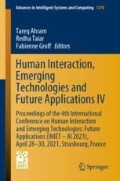Abstract
Backgroud: Three-dimensional gait analysis has been frequently used in clinical detection. Research question: Is JiBuEn® a valid tool in measuring gait parameters. Methods: Subjects who had no previous disease/injury walked across a 6-m long walkway at self-selected comfortable speed while JiBuEn®, Zebris® and Vicon® recorded the motion parameters synchronously. Parameters are averaged across one walk for the three systems. Average absolute error and average relative error were presented for error analysis. Intra-class Correlation Coefficient (ICC), Repeatability Coefficients (RC) and Paired T-test were presented for statistical analyses. Results: An excellent level of agreement was shown with Intra-class correlation coefficients (ICCs) between 0.803 and 0.979 and repeatability coefficients (RCs) between 4.8% and 10.4% of mean values. The JiBuEn® showed good validity with small average relative errors ranging from 2.9% to 4.0%, 3.0% to 5.4% when comparing the data obtained with Zebris® and Vicon® respectively. Significance: excellent consistency and agreement between JiBuEn® and the standard systems were obtained.
Access this chapter
Tax calculation will be finalised at checkout
Purchases are for personal use only
References
Xie, H., et al.: Wearable sensor-based daily life walking assessment of gait for distinguishing individuals with amnestic mild cognitive impairment. Front. Aging Neurosci. 11, 285 (2019)
Giladi, N., Horak, F.B., Hausdorff, J.M.: Classification of gait disturbances: distinguishing between continuous and episodic changes. Mov. Disord. Official J. Mov. Disord. Soc. 28(11), 1469–1473 (2013)
Block, J.A., Shakoor, N.: The biomechanics of osteoarthritis: implications for therapy. Curr. Rheumatol. Rep. 11(1), 15–22 (2009)
Murphy, A.T., et al.: Utilizing three dimensional clinical gait analysis to optimize mobility outcomes in incomplete spinal cord damage. Gait Posture 74, 53–59 (2019)
Santos, P.C.R.D., et al.: Minimal effects of age and prolonged physical and mental exercise on healthy adults’ gait. Gait Posture 74, 205–211 (2019)
Kalron, A., et al.: The association between gait variability with the energy cost of walking depends on the fall status in people with multiple sclerosis without mobility aids. Gait Posture 74, 231–235 (2019)
Ricciardi, C., et al.: Using gait analysis’ parameters to classify Parkinsonism: a data mining approach. Comput. Methods Prog. Biomed. 180, 105033 (2019)
Koldenhoven, R.M., et al.: Gait kinematics & kinetics at three walking speeds in individuals with chronic ankle instability and ankle sprain copers. Gait Posture 74, 169–175 (2019)
Pierre, M., et al.: A study of vicon system positioning performance. Sensors 17(7), 1591 (2017)
Quinlan, J.F., et al.: The use of the Zebris motion analysis system for measuring cervical spine movements in vivo. Proc. Inst. Mech. Eng. Part H: J. Eng. Med. 220(8), 889–896 (2006)
Phanpho, C., Rao, S., Moffat, M.: Immediate effect of visual, auditory and combined feedback on foot strike pattern. Gait Posture 74, 212–217 (2019)
Tao, S., et al.: Gait based biometric personal authentication by using MEMS inertial sensors. J. Ambient. Intell. Hum. Comput. 9, 1705–1712 (2018)
Allseits, E., et al.: The development and concurrent validity of a real-time algorithm for temporal gait analysis using inertial measurement units. J. Biomech. 55, 27–33 (2017)
Donath, L., et al.: Mobile inertial sensor based gait analysis: validity and reliability of spatiotemporal gait characteristics in healthy seniors. Gait Posture 49, 371–374 (2016)
Kalron, A.: Symmetry in vertical ground reaction force is not related to walking and balance difficulties in people with multiple sclerosis. Gait Posture 47, 48–50 (2016)
Beckwée, D., et al.: Validity and test-retest reliability of the stride analyzer in people with knee osteoarthritis. Gait Posture 49, 155–158 (2016)
Webster, K.E., Wittwer, J.E., Feller, J.A.: Validity of the GAITRite? Walkway system for the measurement of averaged and individual step parameters of gait. Gait Posture 22(4), 321 (2005)
Bland, J.M., Altman, D.G.: Statistical methods for assessing agreement between two methods of clinical measurement. Lancet (London, Engl.) 327(8476), 307–310 (1986)
Bland, J.M., Altman, D.G.: Statistical methods for assessing agreement between two methods of clinical measurement. Int. J. Nurs. Stud. 47(8), 931–936 (2010)
Rice, H., et al.: Altered forefoot function following a military training activity. Gait Posture 74, 182–186 (2019)
Acknowledgments
This work received support from the National Key R&D Program of China (Grant No. 2018YFC2001700), the Doctoral Scientific Research Foundation of Dalian University (Grant No. 20181QL001) and the Doctoral Scientific Research Foundation of Liaoning Province (Grant No. 201601313).
Author information
Authors and Affiliations
Corresponding author
Editor information
Editors and Affiliations
Rights and permissions
Copyright information
© 2021 The Author(s), under exclusive license to Springer Nature Switzerland AG
About this paper
Cite this paper
Gao, Q. et al. (2021). Validation of the JiBuEn® System in Measuring Gait Parameters. In: Ahram, T., Taiar, R., Groff, F. (eds) Human Interaction, Emerging Technologies and Future Applications IV. IHIET-AI 2021. Advances in Intelligent Systems and Computing, vol 1378. Springer, Cham. https://doi.org/10.1007/978-3-030-74009-2_67
Download citation
DOI: https://doi.org/10.1007/978-3-030-74009-2_67
Published:
Publisher Name: Springer, Cham
Print ISBN: 978-3-030-73270-7
Online ISBN: 978-3-030-74009-2
eBook Packages: Intelligent Technologies and RoboticsIntelligent Technologies and Robotics (R0)

